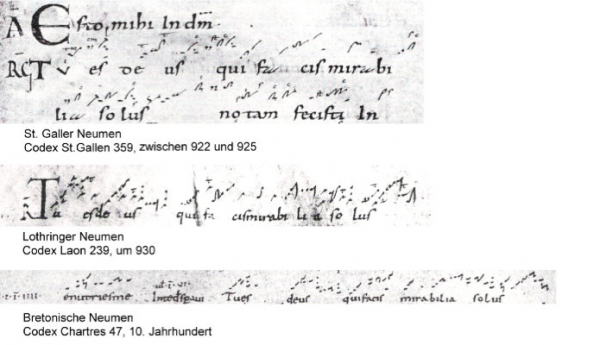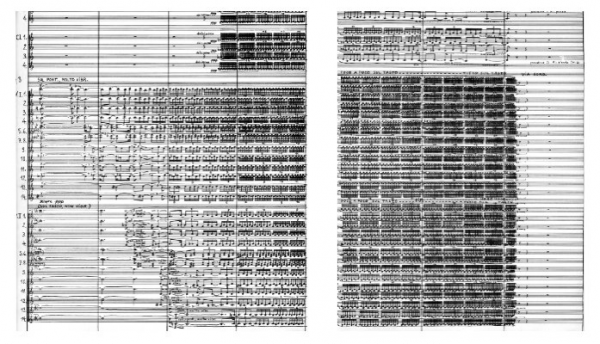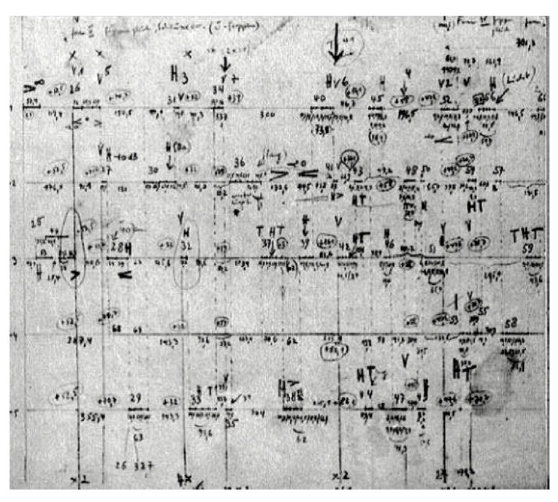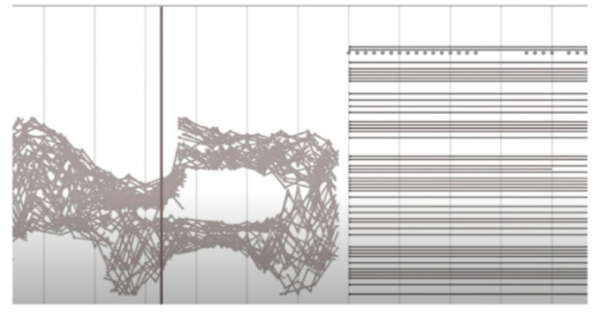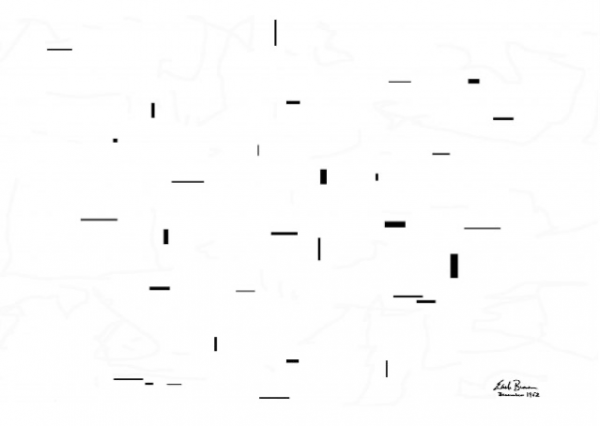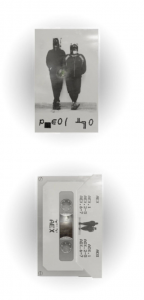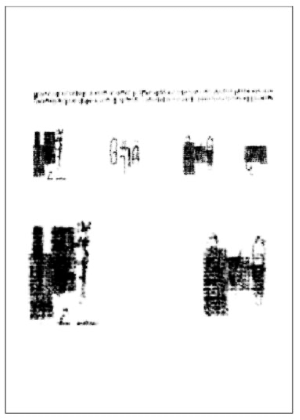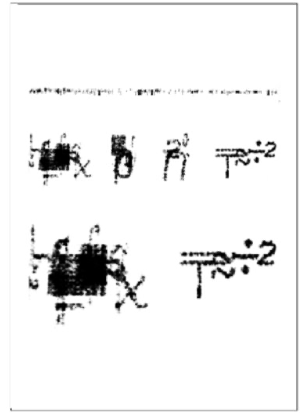Project documentation
The intention of my work lies in the setting of music of purely technical and graphic representations created by chance. The interpreter should be a human being—the abstract technical-graphic representation of the human path back to the technical-auditory representation. The abstraction and complexity demand interpretation through improvisation and free the performers from musicality, tonality, language, and time. The configuration of the analog synthesizer with random generators and haptic sensors depicts the errors and chaos in creating the reference, destroying perfectionism and forcing freedom in improvisation. Transformation through improvisation!
Demarcation
This documentation describes the current state of a project and does not claim to be complete or correct scientific formality. I record my experiences and explain the technical setup, and at present, I distance myself from composition, graphic notation, and free improvisation. This work comes closest to the current state, for example, of Earle Brown’s abstract visual reference in his piece „December 1952.“ This particular form of notation is also known as FOILIO.
Implementation
For the implementation, I examined the development process. The representations were created in the process from incompatibility to compatibility. (To put it more simply, we wanted to print.) During the print tests, compatibility issues resulted in random characters in a random order. So, two dimensions of chance are scaled by the value of compatibility.
These parameters form the requirements for the instrument’s functionality. I chose an analog sound synthesis system consisting of a medium modular system and two analog desktop synthesizers.
The current setup for random/chaos/sensor technology
Algorithms
Doepfer A-118 Noise / Random

As expected, white noise comes out at the „white“ output. The „colored“ output guides the colorful noise, the timbre of which is determined by the „Blue“ and „Red“ controls. Blue emphasizes the high frequencies, and Red emphasizes the low frequencies.
The random number generator outputs a fluctuating random signal, the speed of change and level of which are determined by the lower two controls. However, the red and blue sliders also have an effect because they influence chance deflection. Extreme values are achieved, especially when the red control is comprehensive. Two LEDs indicate the strength of the deflection in the positive and negative range.
Doepfer A 149-1 Quantized/Stored Random
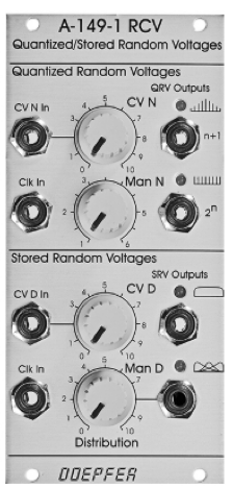
The module is based on the legendary Buchla 265 / 266 Source of Uncertainty and is a highly complex random number generator. It offers quantized random signals with voltage-controllable amplitude (or the number of possible random voltages) and random voltages with 256 values and a probability that can be adjusted manually or by control voltage.
Doepfer A.149-2 Digital Random Voltages
 The A-149-2 is an add-on module to the A-149-1, and it generates random gate signals at eight outputs.
The A-149-2 is an add-on module to the A-149-1, and it generates random gate signals at eight outputs.
The A-149-2 is connected internally to the A-149-1 and generates eight random gate signals in the clock’s rhythm at the Clk input of the Quantized Random Voltage section. An LED indicates the active outputs. Possible applications include the random start of envelopes or other random rhythmic applications.
Make Noise Wiard Wogglebug
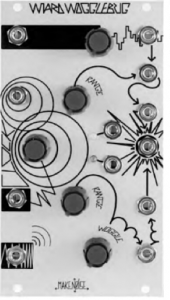
The Wogglebug: Your personal monster for the modular system offers blocked step-shaped and smoothed random voltages, the ominous Woggle CV, two randomly controlled oscillators, and the ring-modulated product of both VCOs. It can also be used as a Clock and gate burst generator. (Quote from SchneidersLaden)
Sensors
2 x Make Noise Pressure Points
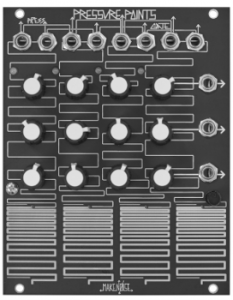
Pressure Points is a controller in which you select and activate one of four levels of three adjustable voltages by touching one of four copper surfaces at the bottom of the module. By touching it, you become a part of the circuit. In addition to the adjustable CVs, when a stage is touched, a gate is output at the GATE output, and a pressure-dependent voltage is output at the PRESS output. Up to four of these modules can be linked internally to obtain controllers of different sizes and complexities. Each gate and pressure output is normalized to their sum bus, the chain’s last gate or pressure output.
Two potentiometers are used to fine-tune the circuit’s feel. One is an internal trim potentiometer used to compensate for the size of your fingers or skin moisture. The other is positioned on the front, adjusting the system’s sensitivity.
SOMA Laboratory Lyra-8
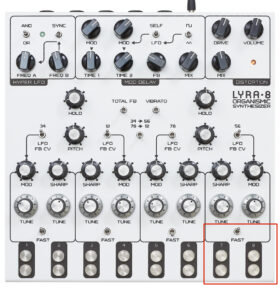
Eight metal tactile sensors that respond to the size of the area covered. Two envelope modes with slow or fast response times allow different dynamic behaviors.
I am currently considered art-historical phenomena and artists.
Neumes
Neumes (Greek νεῦμα neuma, English ‚wave‘) are graphic signs, figures, and symbols that have been used since the 9th century to dictate the melodic form and the desired interpretation of Gregorian chant. Occasionally, they are also used to write secular and religious melodies outside the liturgy. Usually, they are above the text.
